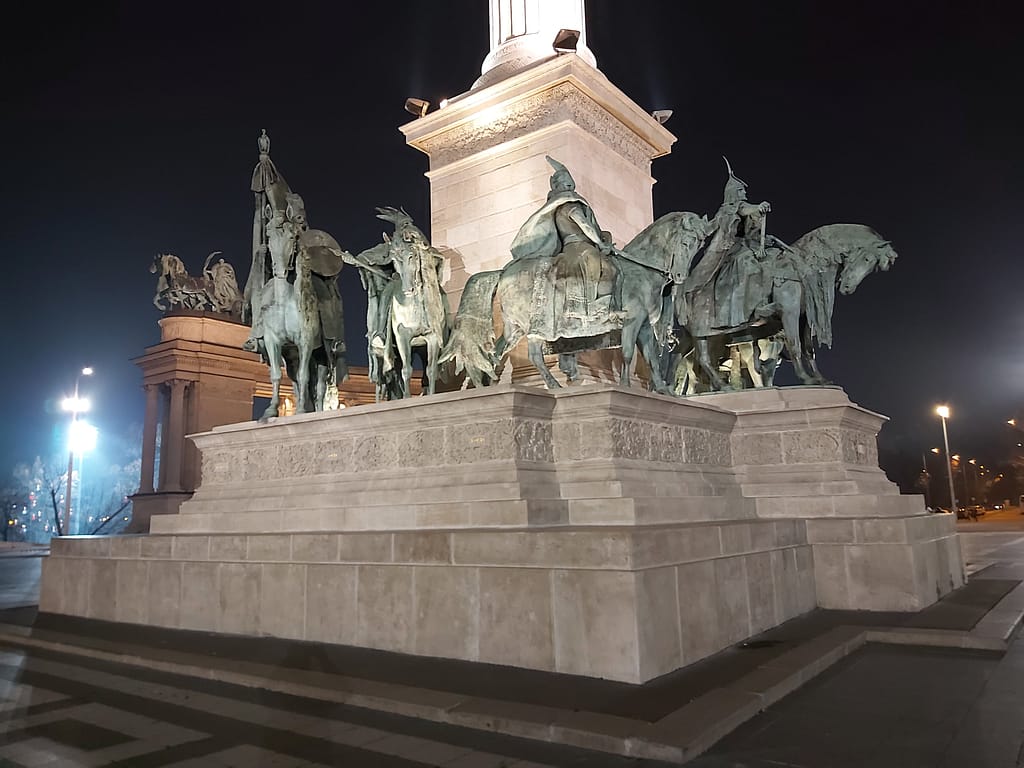Hungary, in its present form, is a multifaceted gem nestled in the heart of Europe, offering an intriguing blend of Eastern tradition and Western modernity. Yet, it is not just the present that makes Hungary captivating. The history of Hungary, full of trials and triumphs of its people, paints a compelling narrative of resilience, identity formation, and innovation. Unfolding like a well-written novel, the saga of Hungary’s history promises to evoke strong emotions and stimulate curiosity. Marked by periods of struggle and upheaval, it is ultimately a testament to the indomitable spirit of its people.
The history of Hungary is not only about kings and battles; it’s also about the farmers, traders, and everyday citizens who have shaped the nation’s destiny. It’s about the cultural influences from the East and the West, the resilience against invaders, the struggle for independence, and the pursuit of progress. From the early Celtic tribes to the splendor of the Árpád Dynasty, from the tumultuous Ottoman invasion to the dual monarchy under the Habsburgs, and from the revolutionary fervor of 1848 to the trials of the 20th century, Hungary’s history is a symphony of distinctive notes, blending harmoniously to form the nation we see today.
The Early Inhabitants: From the Celts to the Romans

Location of Aquincum within the Roman Empire
The tale of Hungary’s intriguing past begins in the mists of prehistory. In the Stone and Bronze Ages, a succession of cultures made their homes in the Carpathian Basin, where modern-day Hungary is located. The oldest artifacts found in Hungary, such as flint tools discovered near Vértesszőlős, date back to around 500,000 BC. Archaeological findings also suggest a flourishing Iron Age culture in Hungary, where the first advanced civilization, the Celts, established their settlements in the 5th century BC.
The Celts, known for their metalworking skills and warrior culture, left a profound imprint on the region. They founded significant settlements, and their religious practices, artistic expressions, and economic techniques influenced the landscape and culture. One well-known Celtic tribe, the Scordisci, even minted their own coins, an indication of their economic sophistication. These Celtic tribes lived relatively peacefully until the arrival of a new power in the region: the mighty Roman Empire.
The Romans, expanding their empire, set foot in the Carpathian Basin in 35 BC, and by 9 BC, they had established the province of Pannonia, covering much of present-day western Hungary. The Romans brought a transformative wave of development to the region with their architecture, infrastructure, laws, and administration. Aquincum, the capital of Pannonia, equivalent to today’s Budapest, emerged as a significant urban center, boasting an amphitheater, baths, and a governor’s palace. The Roman rule lasted for almost four centuries, leaving a rich legacy in the cultural and historical landscape of Hungary.
However, the stability brought by Roman rule began to crumble in the 4th century AD due to internal strife and external invasions. The collapse of the Western Roman Empire led to a power vacuum in the region, inviting invasions from various Germanic tribes, followed by the Huns, Ostrogoths, Lombards, and Avars. These waves of invasions disrupted the region, and it was only in the late 9th century that a sense of stability would return, heralding a new chapter in the history of Hungary: the arrival of the Magyars.
The Arrival of the Magyars: Founding of the Hungarian State

Fearsome Hungarian warriors who arrived in the Carpathian Basin are depicted on Heroes Square
The story of modern Hungary began with the arrival of the Magyars at the end of the 9th century. These nomadic horsemen, led by their leader, Árpád, pushed westward from the Ural Mountains. They reached the Carpathian Basin around 895 AD, displacing the local Slavic and Romanian populations. The Magyars were skilled horsemen; their prowess on the battlefield was unmatched; and their tactics were revolutionary for the time. As a result, they subdued the local tribes and established the Principality of Hungary.
The early Magyars employed a unique strategy in their conquests, known as the “feigned retreat.” This involved pretending to flee in the face of the enemy, luring them into a trap, and then launching a surprise counterattack. This tactic, coupled with their exceptional horseback riding skills, made them formidable opponents.
The golden age of Hungary is often considered to be the era under the rule of the Árpád dynasty, lasting from the late 9th century until the early 14th century. The dynasty, founded by Árpád, the leader of the Magyars, was instrumental in the formation of the Hungarian state and its cultural identity. But its golden age truly began with the reign of King Stephen I, the first King of Hungary.
The Árpád dynasty: The Golden Age of Hungary

Portrait of Stephen I of Hungary, artist unknown
Crowned in the year 1000 AD with a crown sent by Pope Sylvester II, Stephen I was responsible for converting Hungary to Christianity and establishing it as a legitimate European state. Under his reign, Hungary was divided into counties, each overseen by a royal official known as an ‘ispán’. He built numerous churches and monasteries, setting the foundation for a strong Christian Hungary. His wise governance and religious devotion led to his canonization as Saint Stephen, and he is revered as the patron saint of Hungary.
Following Stephen I, the Árpád dynasty continued to rule through tremendous growth and development in Hungary. King László I (1077–1095) expanded the kingdom’s borders and further entrenched the Christian faith. His successor, King Kálmán (1095–1116), codified the laws of the kingdom and encouraged the arts, education, and the spread of the Latin language.
During the reign of King Béla III (1172-1196), Hungary reached its zenith of medieval prosperity and political influence. Béla transformed Hungary into a leading European power through strategic marriages and alliances. He also introduced French culture and influences, which had a lasting effect on Hungarian society and art. The reign of Andrew II (1205–1235) was marked by the issuing of the Golden Bull of 1222, a constitutional document that curtailed royal absolute power and established the rights of nobles, often compared to England’s Magna Carta.
In the mid-13th century, Hungary faced a significant challenge with the Mongol invasion. The Árpád king at the time, Béla IV, managed to rebuild the country after the Mongol withdrawal through the construction of stone castles and the promotion of cities. He was later hailed as the ‘Second Founder of the Homeland’.
The Árpád dynasty’s rule ended with the death of King Andrew III in 1301. His passing marked the end of an era that saw the emergence and consolidation of the Hungarian state and its unique cultural identity. The subsequent centuries would bring new challenges and transformations, but the legacy of the Árpád dynasty would forever be etched in the annals of the history of Hungary.

0 Comments